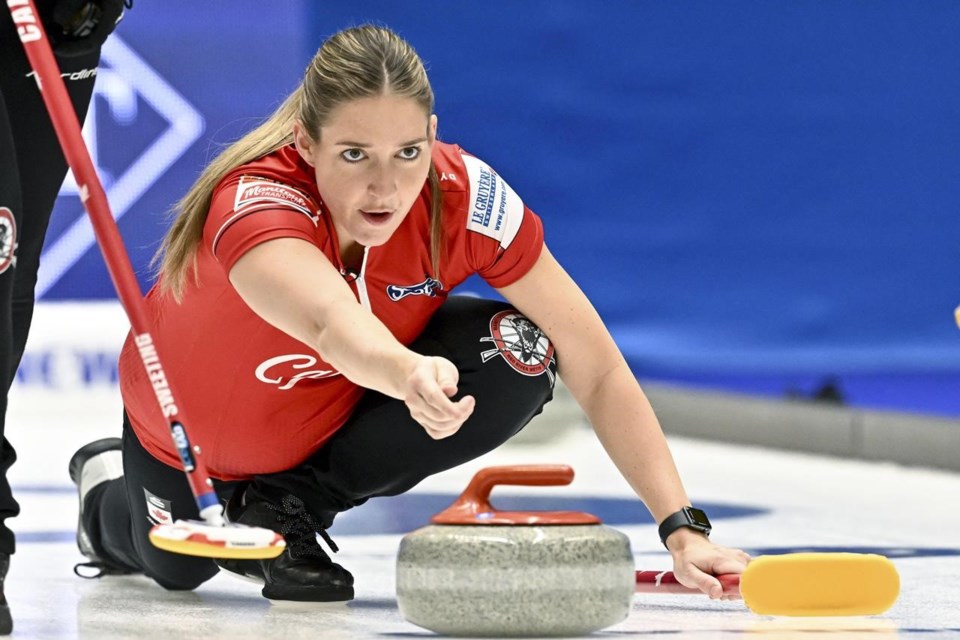CALGARY — Canadian curler Briane Harris was ineligible to compete in the national women's championship because she tested positive for a banned substance.
The 31-year-old from Winnipeg was declared ineligible to compete in the Scotties Tournament of Hearts in Calgary hours before her team skipped by Kerri Einarson played its opening game Feb. 16.
Harris tested positive for trace amounts of Ligandrol in an out-of-competition doping control test conducted on Jan. 24.
Ligandrol is on the World Anti-Doping Agency's list of prohibited substances. It is used to increase energy and muscle growth. According to the United States Doping Agency, there is no medical use for LGD-4033, the developmental code name for Ligandrol.
"As best as can be determined at this time, Ms. Harris was unknowingly exposed to the banned substance through bodily contact," said Harris's lawyer Amanda Fowler in a statement. "In the circumstances, Ms. Harris is therefore keen to clear her name and will seek to expedite any process of mechanism to facilitate such vindication."
The Canadian Centre for Ethics in Sports conducts testing both in competition and outside of competition.
When an athlete provides a urine sample, it is divided into A and B bottles, which gives the athlete a second analysis in the event a banned substance turns up in their A sample.
Harris could face a two-year suspension under CCES regulations, although there is the flexibility to decrease or increase a sanction depending on the facts of a case and the results of tests.
Curling Canada has both a medical doctor and a health and doping control consultant on staff.
Athletes taking medications for medical reasons can apply for a medical exemption.
A prominent Canadian case of inadvertent doping was rower Silken Laumann testing positive for the stimulant pseudoephedrine at the 1995 Pan American Games in Mar del Plata, Argentina.
Canadian officials said the element came from a dose of Benadryl that Laumann took as an antihistamine. She and her teammates were stripped of their quadruple sculls gold medal, but Laumann was allowed to keep her gold in single sculls.
Doping cases in curling are rare, although the Russian husband and wife mixed doubles team of Alexander Krushelnitsky and Anastasia Bryzgalova was stripped of Olympic bronze medals in 2018 after Krushelnitsky tested positive for meldonium.
Ontario curler Joe Frans was suspended two years in 2005 after he tested positive for a cocaine metabolite at the national men's championship in Edmonton.
Canadian wheelchair curler Jim Armstrong had an 18-month suspension reduced to six after testing positive for Tamoxifen, a breast-cancer drug that also counters the side-effects of steroids, in 2012.
He said his late wife's medication was mistakenly mixed with his medications.
This report by The Canadian Press was first published March 12, 2024.
The Canadian Press




